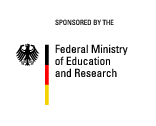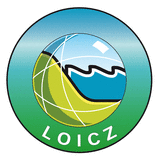Preliminary monitoring results
By Toan Pham Van, Zita Sebesvari, Fabrice Renaud
First results of the monitoring activities are available for the period mid August – end October 2008. In Ba Lang three types of fungicides - Hexaconazole, Propiconazole and Difenoconazole - were detected in the samples. Propiconazole and Hexaconazole were recorded in nearly all samples in concentrations up to 0.78 and 0.14 µg/l respectively. Concentrations decrease in the samples from August to end October. Since these three fungicides are mainly applied in the ripening stage of the rice plants the observed decline in the concentration from August to October is explainable with the rice harvest in August and the flooding-induced agricultural inactivity of rice cultivation until November. Similarly, Difenoconazole was detected in 33% of the samples taken in August in concentrations up to 0.37 µg/l and was not detectable in the samples in September to end of October. Fig. 1 illustrates Propiconazole concentrations in August and October 2008.

Figure 1: Propiconazole concentrations in August and November 2008 in Ba Lang. B1 and B2 are upstream and downstream sampling points in the canal, B1R-B6R are field outflows on the right hand side of the canal, B7L-B13L are field outflows on the left hand side of the canal. Data plotted are the arithmetic averages of duplicates with corresponding standard deviations.
In An Long Propiconazole and Hexaconazole were detected in the water samples taken in August 2008. Concentrations up to 0.18 and 0.22 µg/l were recorded, respectively and were higher in samples taken from water inundating rice fields than in the An Long 2 canal. Due to the large dilution taking place in flood water, none of the compounds were detected in the samples taken during the flooding season (September to October 2008).
Assessment of the first results
In order to determine the potential impact of the pesticide concentrations measured in our monitoring programme on the environment, aquatic life, and human health, a comparison with established surface water/aquatic life guidelines or benchmarks was undertaken.
1) Vietnam´s National technical regulation on surface water quality (2008) does not include guidelines for Propiconazol, Hexaconazol or Difenoconazol in surface water.
2) EPA's compilation of national recommended water quality criteria for the protection of aquatic life and human health in surface water (US EPA, 2006a) does not consider these fungicides.
3) EPA´s Aquatic Life Benchmark Table (US EPA, 2009) contains estimates of concentrations below which pesticides are not expected to harm aquatic life. For Propiconazole the following toxicity values are given (US EPA, 2006b):
| Acute fish | 425 |
µg/l |
| Chronic fish | 95 |
µg/l |
| Acute invertebrates | 2,400 | µg/l |
| Chronic invertebrates | 205 | µg/l |
| Acute nonvascular plants | 93 |
µg/l |
| Acute vascular plants | 4,828 |
µg/l |
None of these benchmarks is exceeded in the samples we have collected.
4) For Propiconazole, US EPA uses also concentration recommendations based on simulations by taking into account the physical characteristics of the pesticide. The environmental concentrations (EECs) of Propiconazole for acute exposures are estimated to be 55.8 µg/l for surface water and 0.64 µg/l for ground water. The EECs for chronic exposures are estimated to be 21.6 µg/l for surface water and 0.64 µg/l for ground water (US EPA, 2006c). Neither acute nor chronic exposure values were exceeded in the samples taken in our case study areas. US EPA does not have established comparable estimates for Hexaconazole and Difenoconazole.
5) The Canadian Water Quality Guidelines for the Protection of Aquatic Life do not consider these fungicides.
In summary, the guidelines either do not consider these fungicides or only Propiconazole. Thus for Hexaconazole and Difenoconazle no assessment can be done. As far as the available guidelines and screening values allows for an assessment for Propiconazole, the measured concentrations are not critical for environment and aquatic organisms since the detected concentrations do not exceed any of the cited guideline values. Harm could be caused only if people would drink the surface water without treatment. For comparison the corresponding drinking water guidelines are listed below:
1) The Australian drinking water guideline established a value at 0.1 µg/l for Propiconazole which is exceeded in 47% of the surface water samples analysed over the entire period and in 85% of the samples taken in August in An Long. Hexaconazole and Difenoconazole are not considered in this guideline.
2) The European Union is using parametric values for individual pesticides (0.1 µg/l) and for total pesticides (0.5 µg/l) in drinking water. The individual value was exceeded in 47% of the samples for Propiconazole, in 7% for Difenoconazole and in in 2% for Hexaconazole analysed over the entire period. The parametric value for total pesticides was exceeded in 9% of the samples analysed over the entire period.
3) WHO uses a different approach than the EU and has set guideline values for a number of individual pesticides in drinking water but not for the three fungicides discussed here.
4) Health-based screening level (HBSL) in drinking water was established by U.S. Geological Survey (USGS) for Propiconazole at 70 µg/l. (Toccalino et al 2008). HBSL is not exceeded in any of the samples collected in the case study areas. USGS did not have established screening level for Hexaconazole and Difenoconazole.
References
Australian Drinking Water Guideline 2006,
http://www.nhmrc.gov.au/publications/synopses/eh19syn.htm
(accessed March 2009)
Canadian Water Quality Guidelines for the Protection of Aquatic Life,
http://www.ec.gc.ca/ceqg-rcqe/English/ceqg/water/default.cfm
(accessed March 2009)
Council Directive 98/83/EC of 3 November 1998 on the quality of water intended for human consumption, Adopted by the Council on 3 November 1998,
http://eur-lex.europa.eu/smartapi/cgi/sga_doc?smartapi!celexapi!prod!CELEXnumdoc&lg=EN&numdoc=31998L0083&model=guichett
(accessed March 2009)
Toccalino, P.L., Norman, J.E., Booth, N.L, and Zogorski, J.S., 2008, Health-based screening levels: A tool for evaluating what water-quality data may mean to human health: U.S. Geological Survey, National Water-Quality Assessment Program,
http://water.usgs.gov/nawqa/HBSL/
QUY CHUẨN KỸ THUẬT QUỐC GIA VỀ CHẤT LƯỢNG NƯỚC MẶT (National technical regulation on surface water quality), 2008, QCVN 08 : 2008/BTNMT, Hanoi
US EPA, 2009, Aquatic Life Benchmark Table,
http://www.epa.gov/oppefed1/ecorisk_ders/aquatic_life_benchmark.htm
(accessed March 2009)
US EPA, 2006a, National recommended water quality criteria,
http://epa.gov/waterscience/criteria/wqctable/nrwqc-2006.pdf
(accessed March 2009)
USEPA 2006b Propiconazole; Pesticide Tolerance, US.EPA 40 CFR Part 180, [EPA-HQ-OPP-2006-0347; FRL-8092-1],
http://www.epa.gov/EPA-PEST/2006/September/Day-22/p8064.htm
(accessed January 2009)
US EPA, 2006c, Environmental Fate Effects Division Risk Assessment for Reregistration of Propiconazole, U.S. Environmental Protection Agency, Office of Pesticide Programs, Docket ID number: EPA-HQ-OPP-2005-0497. Document ID number 0012, accessed March 2009
WHO Guidelines for Drinking-Water Quality, third edition, 2009,
http://www.who.int/water_sanitation_health/dwq/guidelines2/en/
(accessed March 2009)




